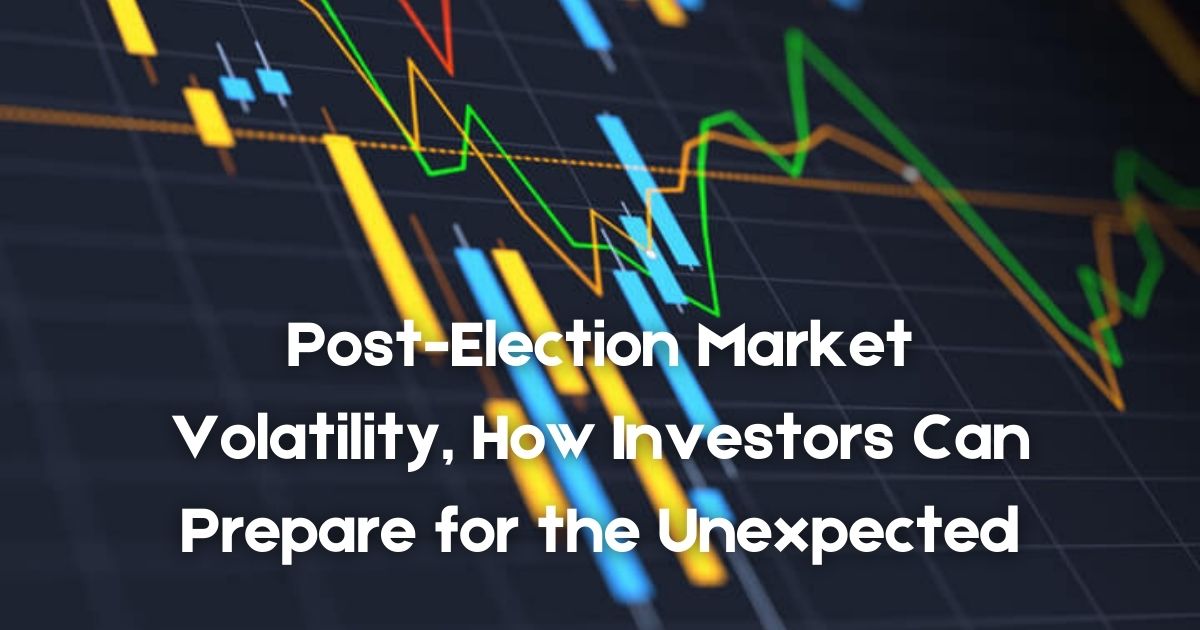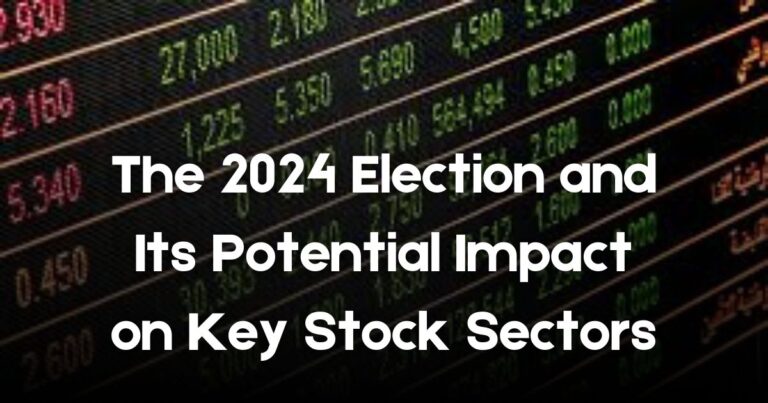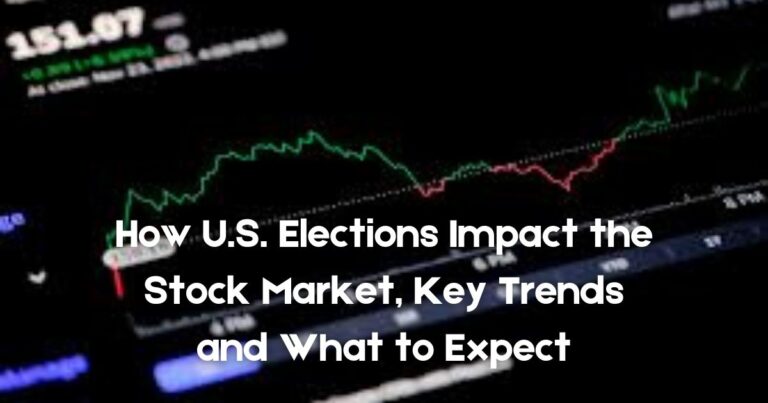
The stock market can be unpredictable, especially after major events like a U.S. election. Following an election, the market often experiences a period of “volatility,” which means prices can go up and down very quickly. Investors may feel uncertain during this time as they try to figure out how new policies or changes in leadership might affect the economy and specific industries.
In this article, we’ll discuss why post-election volatility happens, how investors can stay calm, and some useful strategies for managing investments during these uncertain times.
Why Does Market Volatility Happen After an Election?
An election creates a lot of uncertainty in the market because no one is completely sure what will happen next. Here are some reasons why markets can become more volatile after an election:
- Uncertainty About New Policies: Each candidate has their own plans and promises. After the election, investors start to wonder how the winner will put these plans into action. For example, a new president might make changes to taxes, healthcare, or energy policies, which can have a big impact on certain companies or industries.
- Market Sentiment and Reactions: Investors’ feelings about the future—whether optimistic or pessimistic—can cause big swings in the market. When some investors believe a new policy will be good for business, they may buy stocks, which makes prices go up. On the other hand, if they worry that a policy will hurt the economy, they may sell, causing prices to drop.
- Unpredictable Events: Sometimes, unexpected events occur after an election, such as new regulations or changes in international relations. These surprises can make the market move suddenly, adding to the post-election volatility.
- Government and Policy Shifts: When a new administration comes into power, there can be significant changes in government priorities. These shifts can create uncertainty for businesses and investors who are trying to plan for the future.
What History Tells Us About Post-Election Market Volatility
Looking at past elections, we can see that the stock market often reacts strongly after a presidential election, but the specific outcomes can vary. Here are some general trends:
- Initial Reactions: In the days or weeks following an election, the stock market can have sharp movements, both up and down. This initial reaction is often due to investors quickly adjusting to the new political landscape and any policy announcements.
- Short-Term Volatility: After the election, the market may experience a period of short-term volatility. However, this doesn’t necessarily mean that the market will continue to be volatile in the long term. Once investors understand the new policies better, the market often stabilizes.
- Different Sectors React Differently: Some sectors may react more strongly to post-election changes than others. For example, if the new president plans to invest in clean energy, renewable energy stocks may go up. Meanwhile, if there are plans for more regulations on big tech companies, tech stocks could face challenges.
- Positive Long-Term Outlook: Over time, the market has historically rebounded after elections, even if there are some short-term fluctuations. Many investors view election-related volatility as temporary and remain focused on long-term growth.
How Investors Can Prepare for Post-Election Volatility
Post-election volatility can feel stressful, but there are ways to stay prepared and make smart decisions during this period. Here are some strategies for handling market volatility after an election:
1. Avoid Emotional Decisions
One of the most important things an investor can do during a volatile period is to stay calm and avoid making emotional decisions. When the market goes up and down quickly, it can be tempting to buy or sell in reaction to the swings. However, making decisions based on emotions can lead to mistakes.
Instead, take a step back and remind yourself of your long-term goals. Remember that the market often recovers from short-term volatility. If you make impulsive choices, you may end up selling good investments too soon or buying risky assets without proper research.
2. Diversify Your Portfolio
Diversification is a key strategy for managing risk in any investment portfolio. By spreading your investments across different types of assets, such as stocks, bonds, and real estate, you reduce the chance that a downturn in one area will impact your entire portfolio.
Here’s how diversification can help during post-election volatility:
- Spread Risk: If one sector is affected by a new policy, other sectors might still perform well. For example, if energy stocks are down due to a shift in government policy, tech or healthcare stocks might still perform well.
- Protect Against Losses: Bonds, for instance, are often less volatile than stocks and may offer a safe place for part of your money.
By having a diversified portfolio, you are better prepared to weather any sudden market changes.
3. Focus on Long-Term Goals
The stock market may fluctuate in the short term, but history shows that it tends to grow over the long term. Investors who stay focused on their long-term goals—such as saving for retirement or funding a child’s education—are more likely to see positive results.
If you’re investing with a long-term perspective, try not to let short-term election-related volatility affect your strategy. Keep in mind that short-term changes are often temporary and may not impact the overall growth of your investments over the years.
4. Rebalance Your Portfolio
After an election, it may be a good time to review and rebalance your portfolio. Rebalancing involves adjusting your investments to make sure they still align with your original goals and risk tolerance.
For example, if certain stocks have increased significantly in value, they may now take up a larger percentage of your portfolio. Rebalancing could involve selling some of these stocks and reinvesting in other areas to keep your portfolio balanced.
5. Consider Dollar-Cost Averaging
Dollar-cost averaging is a strategy where you invest a set amount of money at regular intervals, regardless of the stock price. This approach helps reduce the risk of investing a large amount of money during a market peak. Instead, you buy shares over time, which means you buy more shares when prices are low and fewer shares when prices are high.
During volatile times, dollar-cost averaging can be especially helpful. By investing gradually, you can avoid the stress of trying to time the market perfectly, which is nearly impossible even for professional investors.
6. Keep an Eye on Economic Indicators
During post-election periods, certain economic indicators can give insight into where the market might be headed. Key indicators to watch include:
- Interest Rates: Changes in interest rates by the Federal Reserve can influence the economy. For instance, if the government raises rates to control inflation, it could make borrowing more expensive, which might slow down economic growth.
- Unemployment Rates: High unemployment can signal economic weakness, while low unemployment can indicate a strong economy.
- Inflation: Rising prices can be a concern, especially if they increase too quickly. Inflation affects the purchasing power of consumers and can impact company profits.
Keeping an eye on these indicators can help you make informed decisions rather than reacting solely to election-related news.
7. Seek Professional Advice if Needed
If you’re unsure about how to handle post-election volatility, it can be helpful to speak with a financial advisor. They can help you assess your current portfolio and make adjustments based on your individual goals and risk tolerance. A financial professional can also provide guidance on tax implications, retirement planning, and other aspects of your financial future.
What to Avoid During Post-Election Volatility
While there are many ways to prepare for post-election market changes, there are also some common mistakes investors should avoid:
- Avoid Timing the Market: Trying to predict the exact highs and lows of the market is incredibly difficult and often leads to poor results. Rather than attempting to buy or sell at the “perfect” time, focus on a consistent, disciplined investment strategy.
- Don’t Rely on Predictions: Financial experts and media outlets often make predictions about how elections will affect the market. However, no one can truly know what will happen. While it’s okay to stay informed, don’t make decisions based solely on predictions.
- Avoid Making Large, Unplanned Moves: During times of volatility, it can be tempting to make big changes to your portfolio. However, sudden moves may cause you to lose money if the market rebounds quickly. Stick to your plan and avoid drastic changes based on short-term market movements.
The Bottom Line: Staying Steady Through Market Volatility
Post-election volatility is a common occurrence in the stock market. While it can be unsettling, it doesn’t have to derail your investment strategy. By focusing on long-term goals, diversifying your portfolio, and making thoughtful decisions, you can weather market changes and keep your financial plan on track.
Remember, elections are only one of many factors that affect the stock market. By preparing for the unexpected, you can face any challenges that come your way with confidence and resilience.






